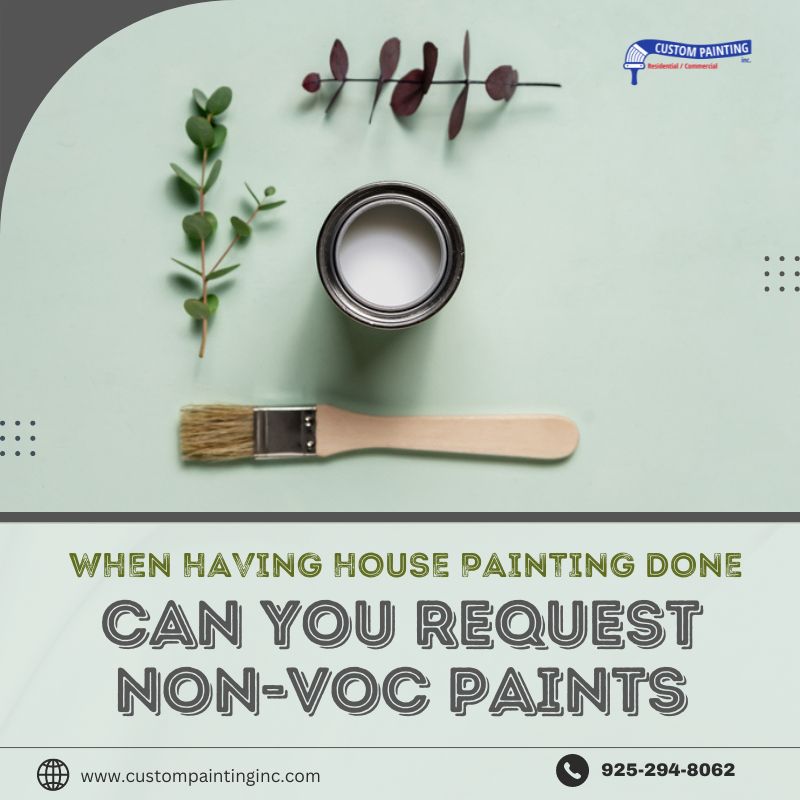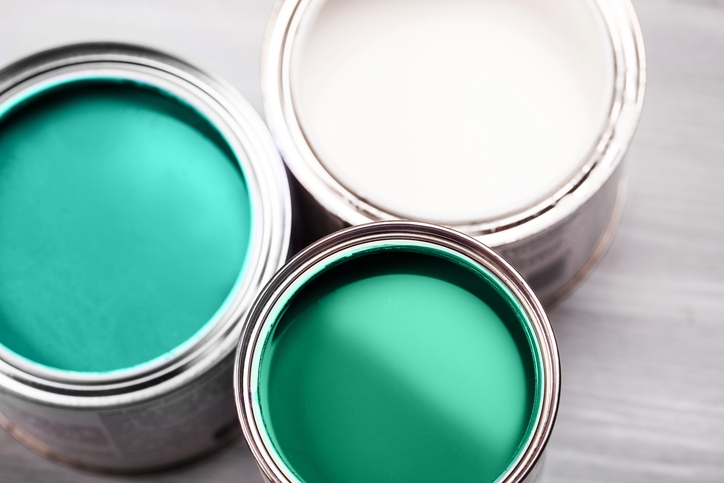Choosing the right paint is more important than you might think when painting your home. Not only does it affect the appearance and durability of your walls, but it also significantly impacts your health and the environment.
Traditional paints often contain volatile organic compounds (VOCs), which are chemicals that can release harmful gasses into the air. These can lead to poor indoor air quality and various health issues, such as headaches, dizziness, and respiratory problems. VOCs can also contribute to environmental problems like air pollution and smog.
Thankfully, there’s a better option available: non-VOC paints. These paints are formulated without these harmful compounds, offering a safer and more eco-friendly alternative. They provide numerous benefits, including improved indoor air quality, reduced health risks, and a smaller environmental footprint.
What are VOCs?
Volatile Organic Compounds, or VOCs, are chemicals that quickly become vapors or gases at room temperature. These compounds are found in many household products, including paints, cleaning supplies, and building materials.
VOCs can significantly impact indoor air quality when they evaporate into the air. Breathing in these chemicals can cause a range of health issues, from minor irritations like headaches and dizziness to more serious problems such as respiratory illnesses and long-term chronic conditions. Poor indoor air quality can be particularly harmful to children, the elderly, and those with pre-existing health conditions.
Common Sources of VOCs in Household Products
VOCs are surprisingly common in many everyday products. Some of the primary sources include:
- Paints and coatings: Traditional paints, varnishes, and finishes can release VOCs during application and as they dry.
- Cleaning supplies: Many cleaners and disinfectants contain VOCs that can linger in the air after use.
- Building materials: Products like plywood, particleboard, and certain types of insulation can emit VOCs.
- Home furnishings: Carpets, upholstered furniture, and even flooring can contribute to indoor VOC levels.
Benefits of Non-VOC Paints
There are a number of good benefits from using these paints, especially non-VOC paints, for both the homeowner and the painter.
1. Reduces respiratory issues and allergies
Non-VOC paints significantly reduce the risk of respiratory problems and allergies. Traditional paints release chemicals that can irritate your lungs and trigger allergic reactions. Choosing non-VOC paints creates a safer environment for everyone in your home, especially those with asthma or allergies.
2. Improves overall indoor air quality
Using non-VOC paints helps maintain better indoor air quality. With fewer harmful chemicals floating around, you and your family can breathe easier, literally. This is particularly important in spaces where you spend a lot of time, like bedrooms and living rooms.
3. Lower emissions of harmful chemicals
Non-VOC paints contribute to a cleaner environment by emitting fewer pollutants. Traditional paints can release VOCs into the air, contributing to air pollution and even smog formation. Choosing non-VOC paints means you’re helping to reduce these harmful emissions.
4. Easier cleanup with water
One of the great advantages of non-VOC paints is how easy they are to clean. Unlike traditional paints, which require harsh chemicals for cleanup, non-VOC paints can typically be cleaned with just soap and water. This makes the painting process simpler and more convenient.
5. Less odor compared to traditional paints
Non-VOC paints have a much milder odor than traditional paints. This means you won’t have to deal with that strong paint smell lingering in your home for days. You can paint a room and use it shortly after without being overwhelmed by fumes.
Types of Non-VOC and Low-VOC Paints
If non-VOC or low-VOC paint is what you are looking for, consider these options:
1. Natural Paints
Natural paints are crafted using ingredients sourced directly from nature, such as plant oils, minerals, and clay. These paints avoid synthetic chemicals and are biodegradable, making them a very eco-friendly option.
Examples include milk paint and clay paint. Benefits of natural paints include being free from harmful toxins, having minimal odor, and offering a beautiful, matte finish that ages gracefully.
2. Zero VOC Paints
Zero VOC paints are formulated to contain less than 5 grams of VOC per liter. This means they release virtually no toxic emissions, ensuring the safest possible air quality in your home.
Many popular brands, such as Sherwin-Williams and Benjamin Moore, offer zero VOC lines. These paints come in a wide range of colors and finishes, providing the same quality and durability as traditional paints without the harmful chemicals.
3. Low VOC Paints
Low-VOC paints contain a reduced amount of VOCs compared to conventional paints, but not zero. These paints have fewer than 50 grams of VOCs per liter for flat or matte paints or lower than 100 grams of VOCs per liter for non-flat paints, such as semi-gloss or satin.
Brands like Behr and Valspar offer low VOC options. These products are available in various finishes and are designed to balance performance with lower environmental impact. They are a great option if zero VOC paints are unavailable in the desired color or finish.
How to Choose Non-VOC Paints
The market for non-VOC paints is growing, with more brands offering high-quality, eco-friendly choices. When you shop for paint yourself, here are some tips for choosing the right paint:
1. Compare prices.
When selecting non-VOC paints, it’s important to compare prices. While non-VOC options may be slightly more expensive than traditional paints, the health and environmental benefits often justify the extra cost. Look for sales or discounts that can make these paints more affordable.
2. Check its availability in local stores.
Check the availability of non-VOC paints in your local stores. Some brands might be more readily available in certain areas. Visit a few stores or browse online to find the best selection.
3. Evaluate the coverage and durability of non-VOC paints.
Some brands offer better coverage with fewer coats, saving you time and money. Durable paints also last longer and resist wear and tear, providing better value in the long run.
4. Compare brands.
To make an informed decision, compare popular non-VOC paint brands. Look at customer reviews, expert opinions, and independent testing results. This will give you a clearer picture of which brands perform best.
List the pros and cons of each brand. For instance, some brands may excel in color variety but may be pricier, while others might offer better coverage but have a more limited palette. Understanding these trade-offs will help you choose the paint that best meets your needs. Here’s a pros and cons list that may help:
Sherwin-Williams Harmony:
- Pros: Excellent coverage, wide range of colors, trusted brand.
- Cons: Higher price point.
Benjamin Moore Natura:
- Pros: Zero VOC even after tinting, great durability, minimal odor.
- Cons: Limited availability in some areas.
Behr Premium Plus:
- Pros: Affordable, available at major retailers, good coverage.
- Cons: Fewer color options compared to premium brands.
By considering these factors and comparing brands carefully, you can find the perfect non-VOC paint for your home.
Conclusion
Opting for non-VOC paints brings numerous benefits to your home and the environment. They offer easier cleanup and less odor, making your painting project more pleasant.
If professional painters haven’t used low- or non-VOC paints before, you can request them to use them when they paint your home. Chances are painters will be willing to use them.
Custom Painting, Inc. uses non-VOC paints, should you request them, so you can ensure a safer, eco-friendly environment for you and your family. With top-notch service, high-quality products, and a commitment to sustainability, we make your home look great and feel even better. Don’t wait—call us today at 925-686-0903 or fill out our contact form and take the first step towards a beautiful, healthy living space!



